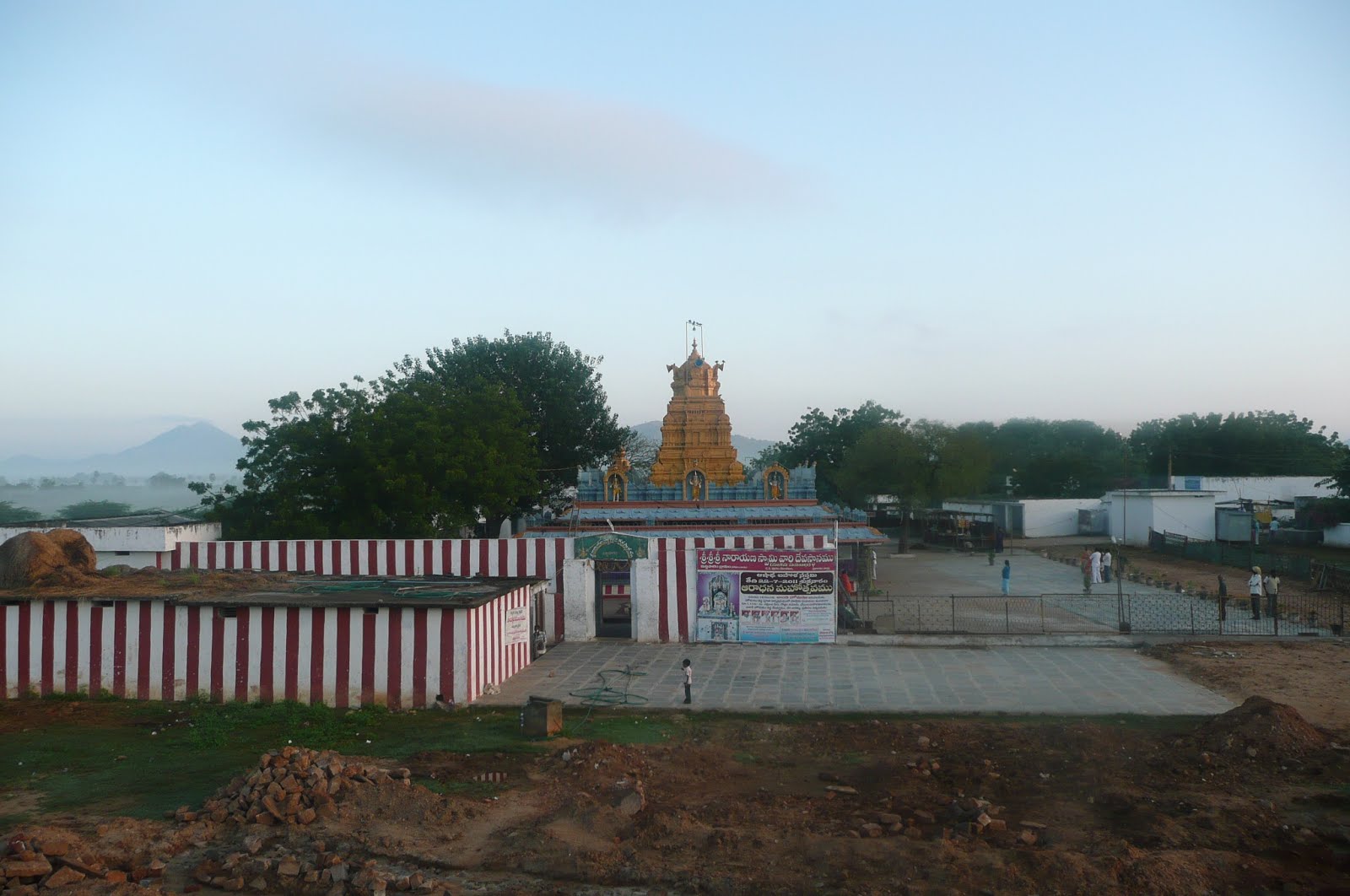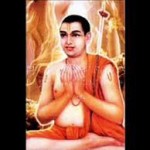Background
Sri Avadhuta Narayana Swami is a venerated Yogi of Mittapalem in Prakasam district. He is said by many to have hailed from the fifth class (panchama), and thus would be a Hindu Telugu Dalit Saint.
Dharma is often incorrectly seen solely through the prism of varnaashrama dharma. While it is true that it had its place in governing orthodox Hindu society, it is also true that many have cynically misused it to advance selfish interest. As a result, the role and contribution of Telugu Dalits is often forgotten in today’s caste tribalist Andhra Pradesh.
Panchama political pioneers such as G.M.C. Balayogi and scholar-literateurs such as Gurram Jashuva gaaru are rarely discussed, when these dalit doyens should be household names to all cosmopolitan Telugus today. Dharma is a big tent, and the mistakes of the past must be rectified in the present to pave the path to a brighter future for all sections of society.
In Prakaasam district, near Ongole, stands a spiritual figure and saint who breaks the mould. In a state that increasingly fails to see beyond caste, is a Swaami who is said to accept all castes and even himself hail from the fifth caste.
Venkataraamayya and Lakshmamma’s 3rd son was a blessed child. They named him Kondayya. At a young age, he travelled with sanyaasis, and learned yoga from them. His parents passed away in the early 1700s. He did tapas on Naarakonda, at Naaraayanapuram. That is how he gained the appellation “Naaraayana Swaami”.
Many and manifold are his leelas. Though many genuine dharmikas recognised his spiritual attainment, there were those who were jealous of being superceded by him. Alas, the noble meaning of brahmanathva is all but forgotten in the present era. While there are many conscientious brahmanas today, true brahmanas like Pandith Chelam who follow the traditional life are lessening in number.
As a result, there are many materialist brahmanas who are filled with caste pride, and violating Vedic injunction, they have taken up all sorts of sordid kaapaalika (black magic) rituals. Angry with Avadhootha Naaraayana Swaami’s growing influence, they began doing such abhichaara (foul rituals) on him. However, due to his yogic attainment and pure heart, he was protected by Parabrahma. Later they tried to strike him with sticks, but the sticks themselves turned to snakes. Finally, goondas were hired to throw the meditating yogi into the well. Here again, Avadhuta Narayana Swami prevailed, and left the pool of water unharmed.
These miraculous tales soon began to spread widely. Many devotees fell at his feet seeking succour from their karmic suffering. He blessed them and taught them pure mantras filled with bhakthi for Paramaathma.
The kaapaalika kulahankaaris became angry, and finally demanded the King of Kaalahasthi’s intervention. Naaraayana Swaami gaaru was soon brought before the court. Angered by the notion of a panchama (chandala) lecturing him and brahmanas on dharma, the haughty king had the venerable yogi jailed. Here again many conspiracies were hatched against him, but he again survived unharmed.
Amazed by these leelas, the Kaalahasthi king brought him before the court again, and begged his pardon. The Raajayogi told the Raaja about the travails of the people, and the king showed him respect, granting him land in Chandrasekharapuram for a future temple in the name of the Avadhuta. Naaraayana Swaami attained Mahasamaadhi in ~1750 CE.
In Mittapaalem, Kanigiri Taluk, Chandrasekharapuram Mandal, Prakaasam district on Amavasya, Avadhuta Narayana Swami left mortal coil. In that place, a samaadhi was constructed for him. It is said that if one sleeps in premises of the temple for 3 weeks, his wishes will be granted. Alternately, those who take his vibhoothi mixed with miriyaalu (pepper) are said to benefit.
In particular, Mittapaalem Naaraayana Swaami is said to be a saviour for those suffering from physical, mental, or spiritual distress and especially skin diseases, such as psoriasis.
This is particularly poignant, as it is asserted that Avadhootha Naaraayana Swaami hailed from the panchama or dalith community, who are often unfairly associated with such maladies.
Rather than seeing one’s circumstances fatalistically, through penance (tapasya), purity of heart/faith (shraddha), and divine grace (anugraha), one can overcome one’s karma. That is the message of Mittapaalem Naarayaana Swaami.
Achievements

It is difficult to describe the dharmic depth of a dalith yogi to the culture of a region roiling in casteism. But Avadhootha Naarayaana Swaami’s life itself speaks about the impact.
Though only a modest number of Telugus have heard of him, his life story has been rapidly growing in the past few decades. A number of miracles are attributed to this Dharmic Dalit Saint. He sheltered suffering women and returned them to their husbands or restored health to their husbands. He is said to have restored to life a youth who had passed due to snake bite.
That he dared to stand up to those misusing varnashrama dharma showed his courage and depth of character. Time-and-again when he was opposed or attacked, he showed his true saatvic spirit by refusing to revenge himself. That is the sign of a true God-conscious person who knows Paramaathma will protect him come what may or humbly accepts his fate if otherwise. Neither did he cooperate with those arrogant oppressors nor did he attack them. Instead, he demonstrated the calm breeze of one who had attained enlightenment, and focused on uplifting the Andhra masses, suffering from a time of disorder and invasion.
However, like Sri Krishna with Sisupaala, there are indeed limits to God’s tolerance of the misdeeds of the sanctimonious. Mittapaalem Naaraayana Swaami saw the full scale tyranny enacted by these hypocritical clericals, and soon pronounced their fates. For going against Dharma by doing kaapaalika rituals, all of them would have to undergo their karma and lose what they hold dearest.
The message is not one of revenge. Rather, the message is that with great power and privilege comes great responsibility. Those who failed to do their dharma cannot hide behind varnashrama dharma. Raajaputra or Rishiputra, all are accountable to dharma and Paramaathma. A forgiving yogi himself showed that even those of humble birth have the right to speak up if the high born do wrong. That is his greatest achievement of all.
Legacy
Telugu daliths today are often not given their due. It is imperative to recognise their contributions not just in AP, but in the wider South of India. Haralayya Swaami himself is a famous veerashaiva of the madiga caste, though from Karnataka. His tragic sacrifice is known to have been the catalyst for the rise (or revival) of the Veerashaiva tradition, championed by the conscientious Niyogi brahmin Basavacharya. While the Veerashaivas had a tremendous impact in Karnataka, their legacy in Andhra Pradesh would decline after the fall of the Saivite Kakatiyas. Nevertheless, the social reform they championed would revolutionise political equations in Dakshina Bhaaratha, and would demonstrate that Sanaathana Dharma can and would splinter off sampradayas from the orthodox Vaidhika Dharma.
Annamacharya was yet another champion of depressed classes, and sought to uplift them by advocating scheduled caste temple entry. However, if the folk legends are true, then Avadhootha Narayana Swami actually hailed from the so-called ‘Untouchable’caste, and deserves his dharmic due. Indeed, it is divinely poetic that someone who might have originated from the “charmakaara” community would bless chelas with freedom from skin diseases such as psoriasis, etc. Many bhaktas even today seek his blessings in Mittapaalem, near Ongole, in Prakaasam District. His samadhi is a place of sanctity.
Andhra today stands at a crossroads. Its people are at each other’s throats and moronically caste and phillim obsessed. Mittapaalem Narayana Swami is a symbol of the true nature of Sanaathana Dharma, which accepts people from high and humble backgrounds alike. The strict varnashrama dharma of a different era was premised on the reality of linked gunas (spiritual qualities) with janma (birth). But when many of the self-proclaimed saatvic today have no sattva, people must look past mere varna markers and evaluate a person based on character.
In contrast to the kulahankaari kaapaalika braahmanas who attacked Avadhootha Naaraayana are true braahmanas like Sri Annamacharya, who fought for the dignity of high and low, saying “brahmam okkate”. However, such souls are few and far between at present. Moreover, whether it is Karamchedu or Chundur, caste violence by any caste must be condemned.
Vaidhika Dharma was birth based because in the Satya, Treta, and Dvaapara Yugas, Dharma and Spirituality were the main responsibilities of the highest varnas. But in the mixed Kali Age, when all castes are materialistic, the true spiritual nature of the Vedas and Parabrahma are occluded. Is it any wonder that Hindu heterodoxies (termed under Sanaathana Dharma) are becoming ever more popular?
Braahmanas and Panchamas alike are welcome to Mittapaalem without discrimination for darshanam. Over a thousand people are said to attend each Sunday. For Mahasivaraathri, for 7 days, there is a great festival at this devasthaanam.
Perhaps it is time that spiritual personalities such as Narayana Swami of Mittapaalem took centre-stage.
Let the common or general dharma be our guide in the revival of Bhaaratavarsha, and let all classes and communities be given spotlight for their contributions to our culture.
References:
- “Places to Visit”. AP Temples Portal. https://tms.ap.gov.in/mlmlkd/cnt/place-to-visit
- “Narayana Swamy Mittapalem”. http://venkatpolepalli.blogspot.com/2015/01/narayana-swamy-mittapalem.html
- Lord Mittapalem Narayana Swamy Official. https://www.facebook.com/LordMittapalemNarayanaswamy/?hc_ref=ARRro5TN2gTKHYCPOOY0CjiRfchfdIsGiSU9UkVSVNw3GVlG4R8Lz5R9BWCjRkSJhOA&fref=nf&__tn__=kC-R
- https://www.youtube.com/watch?v=yJTp2fZ27io
- https://www.youtube.com/watch?v=lws9H4LQjBo






